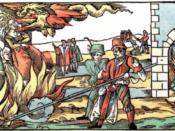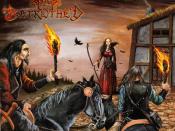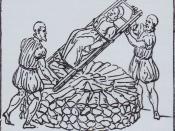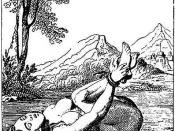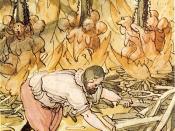Frankie Reece Dr. Jeffery Watt History 356 November 18, 2002 The Witch~Hunt in Early Modern Europe by Brian P. Levack In The Witch~Hunt in Early Modern Europe, Brian Levack attempts to provide updated information concerning the witch hunts which took place in Europe between 1450 and 1750. By breaking the book down into chapters on every possible influence on the witch hunts, Levack sets out to prove there is no definitive reason or explanation for the tragic number of unjust executions that took place.
If Levack was trying to use confusion as the primary reason that no clear picture could be defined, he succeeded. As a reader I felt like I was constantly being run around in circles in the first few chapters. The information within each chapter, while at first interesting, was repeated and/or defined so repetively that I lost interest in what was being said. As well as the repetition of words and definitions, Levack jumped back and forth between centuries so often that it would have almost been better if he had just not tried to distinguish what specific time period he was talking about.
In an effort to cover all aspects and possibilities, the book at first felt too general jumping from the use of hallucinogenics to old age to disease to fear to torture for the witch hunts.
In the book, the author at first describes what exactly he is talking about in the chapter 'The Intellectual Foundations.' He defines what the concept of witchcraft was at the time and how the different beliefs of the Devil became involved. It seems at first, heresy was the crime which later evolved into witchcraft or maleficia. The next chapter, 'The Legal Foundations', gets a little more into the detail of the torture and how the secular and ecclesiastical courts handled the hearings.
I do however feel that once Levack introduced the impact of religion, whether it be the courts or the Reformation, the book took on a clearer setting and was a little easier to make sense of. Levack started giving more specific details as well as the tables that contained interesting and sometimes surprising information. The hearings and number of executions varied so widely between geographical locations but with great similarities in sex, age and marital status. While the courts were used as a forum, torture and the results of the torture, or even the fear of torture, seem to explain the great numbers. By the time you to the last chapter, 'Decline and Survival' you are a little more captivated by the process and surprised that survival is a word associated with the time period.
Levack does a very good job in giving the reader an idea of how senseless and unfair the witch-hunts were. Not only do you finish the book feeling that many innocent women, and sometimes men, were tried on baseless accusations, you get an idea of the devastation it must have caused to many centuries of families in the years that followed. Not only was there execution and suicide, there was a label assigned to the tried person even if he or she was found innocent.
While there is no clear way to show the exact numbers or the exact cause of the witch-hunts, Levack is clearly well studied and read in the events that took place. Although The Witch-Hunt in Early Modern Europe is not a book I would read for enjoyment and was very confusing at times, you do feel that you have learned important details about a country in a critical time.
